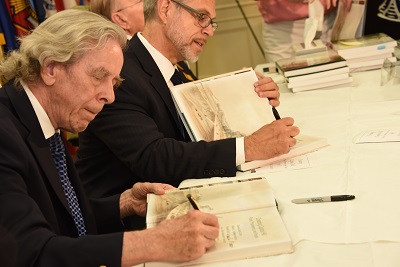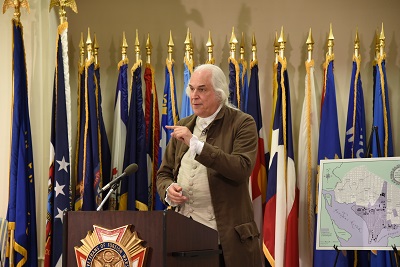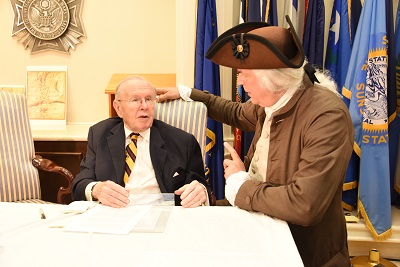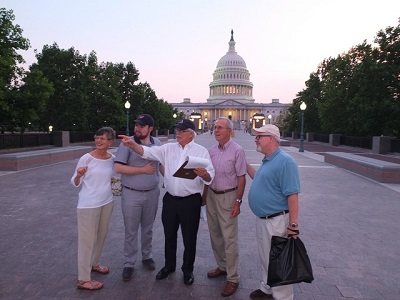On Monday, June 18th, the United States Capitol Historical Society hosted an event to launch its latest book Creating Capitol Hill: Place, Proprietors, and People. Written by Charles Carroll Carter, William C. diGiacomantonio, and Pamela Scott, with maps by Don Alexander Hawkins, the book tells the story of how the Founding Fathers reached a compromise to situate the permanent seat of government along the Potomac River, how George Washington and Pierre L’Enfant chose the site for the city, how President Washington negotiated an agreement with the proprietors who owned the land on which the city was to sit, and how a neighborhood and capital city arose from these tenuous arrangements.
Donald G. Carlson, Chair of the USCHS Board of Trustees opened the event with remarks praising the dedication of the authors and editor Donald Kennon (also USCHS Chief Historian Emeritus) in seeing this book through to completion. Carlson also introduced a special guest who spoke to the gathered audience: “George Washington” as portrayed by Dean Malissa, the official interpreter for George Washington’s Mount Vernon. “Washington” spoke to the great uncertainty and challenges that beset the new republic at its founding and subsequently as they established a capital city, but emphasized that hope prevailed so long as people came together in a spirit of amity and mutual concession.
Donald Kennon moderated a panel featuring all four contributors to the book. Carter detailed his lifelong fascination with the history of his family, as well as a few myths he has long wanted to debunk (such as “Jenkins’ Hill”). diGiacomantonio shared how his background in political history enabled him to better explore the circumstances which yielded the Residency Act – creating a permanent seat of federal government along the Potomac River – as well as the agreement of the proprietors to yield half of their land to the new government in the expectation of a tremendous increase in value for the remainder. Hawkins explained how he got interested in maps of Washington, DC and the important role they play in understanding the history told by the other authors. Finally, Scott elaborated on how Carroll and Thomas Law were able to create a fledgling community to serve Congress at its earliest occupancy in Washington.
Charles Beck and Samuel Holliday, both USCHS Tour Guides, then took interested guests on the Inaugural Creating Capitol Hill Walking Tour to explore the neighborhood and sites featured in the book. Ranging from the USCHS Headquarters at Second Street and Maryland Avenue Northeast as far as the Longworth House Office Building at New Jersey and Independence Avenues Southeast, the tour highlights such themes from the book as land deals between the proprietors and fledgling government, construction of homes and boarding houses, and early developments in commercial and social life on Capitol Hill.
C-SPAN was present to record the evening’s proceedings for their Book TV Series, and the video can be viewed here.



















